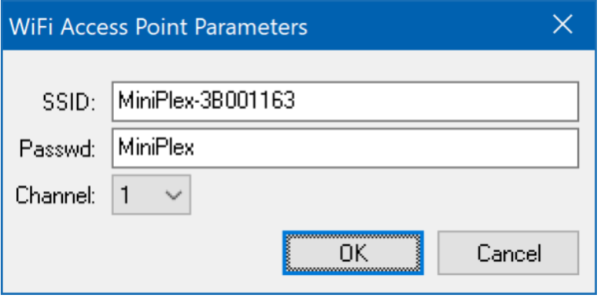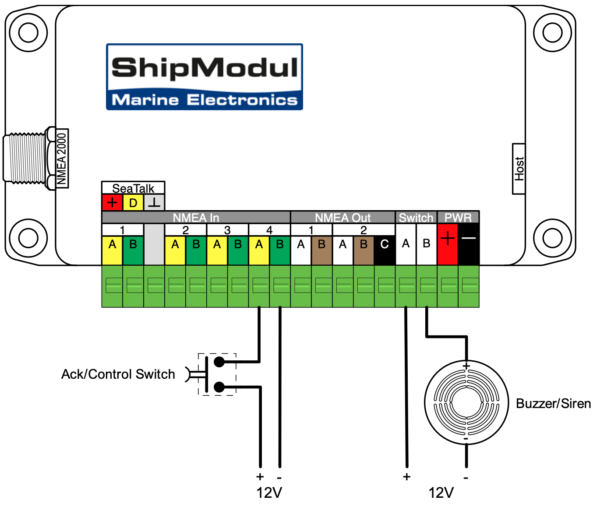 The MiniPlex-3 multiplexer has been experiencing since November 2021 numerous software improvements and changes with the Firmwares (Firmware) Versions 3.x.x. The latest version 3.4.0 Date of 13 January 2022. These firmwares are closely associated with the MPXConfig3 utility, the latest version of which 3.5.0 is required to perform the latest device update. To date, this utility can only be used with PC/Windows, the macOS version probably not being available until late February.
The MiniPlex-3 multiplexer has been experiencing since November 2021 numerous software improvements and changes with the Firmwares (Firmware) Versions 3.x.x. The latest version 3.4.0 Date of 13 January 2022. These firmwares are closely associated with the MPXConfig3 utility, the latest version of which 3.5.0 is required to perform the latest device update. To date, this utility can only be used with PC/Windows, the macOS version probably not being available until late February.
Improvements
-
Communication
In regards to the MPXConfig3 utility improvements, the communication speed of all inputs and outputs NMEA 0183 has been increased to 115200 Baud. The treatment of sentences NMEA 0183 has been optimized, reducing CPU processor load from roughly 50% up to 2-3%. This significantly improves the responsiveness of MPXConfig3, regardless of the amount of data received from the MiniPlex-3. Moreover, the MPXConfig3 utility now verifies communication with the MiniPlex-3 : all commands sent require an acknowledgment.
-
Wi-Fi
A menu option and a configuration window have been added to set/change Wi-Fi settings : SSID, Password and channel.
A new order $PSMDWI,R also allows the Wi-Fi module to be completely restored to its factory settings. This can restart a Wi-Fi module that no longer responds to the re-activation command$PSMDWI,A.
-
NMEA Transfers
The TAG Blocks (tags identifying the sender of a NMEA sentence, formed by the first two characters) are now only enabled during an active connection with MPXConfig3. They are used to populate the routing table using a capture or when selecting a specific input for visualization. When MPXConfig3 closes the connection, TAG Blocks are always automatically disabled by the MiniPlex-3, unless the TAG Blocks option is checked. This prevents TAG Blocks from remaining activated, which can cause problems with navigation software with sloppy NMEA 0183 parsers.
-
NMEA 2000
The Manufacturer Code-Table NMEA 2000 has been updated. Several new manufacturers were added, as well as the missing code for Furuno. This table is used to fill the "Manufacturer" column in the NMEA 2000 Devices window.
Route table now records device names NMEA 2000 instead of source addresses (SA : Source Address). This is more intuitive and helps maintain a correct routing table if the source addresses change when new devices are connected to the NMEA network 2000. All columns related to NMEA 2000 in the route table are now hidden when connecting to a MiniPlex-3 without an interface NMEA 2000 (Miniplex-3USB / -3E / -3-Wi, without the NMEA 2000 connector and without the suffix -N2K).
News
Regarding the MiniPlex-3 device itself, in addition to the general increase of Inputs/Outputs speed at 115200 Baud, many features have been added to its operation. Here are the most notorious :
-
New features
MOB AIS Alarm
An AIS-based MOB alarm has been implemented, responding to AIS-SART messages from SART devices, AIS-based MOB and EPIRB, and can store up to 8 MMSI numbers. An Push button and a Buzzer Must, if the feature is activated, be connected to the input respectively In-1 and output Switch of the device.
Engine data NMEA 2000
Engine data NMEA 2000 are now converted to sentences NMEA 0183 (XDR/RPM).
Generic sensor data NMEA 2000
Conversion NMEA 2000 of PGN 65286 (Fluid flow) and PGN 127505 (Fluid level) Maretron brand sensors in sentences NMEA 0183 XDR.
Modbus RTU
The MiniPlex-3 can now function as a Modbus Master RTU, reading data from Modbus-enabled sensors. Modbus is a widely used industrial protocol between PLCs (Programmable Logic Controllers) and sensors. The MiniPlex-3 can read data from such sensors and convert the values of these sensors into sentences NMEA 0183 $YXXDR. When this option is enabled, a Modbus tab is available and NMEA Out-2 becomes a Modbus RTU port (RS485) to which Modbus sensors can be connected.
Mode SeaTalk-STNG
A new mode SeaTalk-STNG is added to the input In-1. This mode converts control datagrams to and from NMEA 2000/SeaTalkNG. This allows an older S100 remote control to be used to control a Raymarine autopilot over NMEA 2000. This conversion replicates Raymarine's SeaTalk-STNG converter.
As an improvement, SeaTalk1 rudder angle is now converted between SeaTalk1 and NMEA 0183/2000. In addition, navigation to a waypoint is now fully converted between SeaTalk1 and NMEA 0183/2000 using all required SeaTalk1 datagrams.
Improvements
A long list of improvements concern NMEA0183 and sentence conversions NMEA 2000, Setting up devices NMEA 2000, data routing NMEA 2000, New data supported (weather, attitude and heave, aso.). The full list is available on this page of ShipModul's website.
The MinipPlex-3 has been the subject of a new User Manual (V3.4.x – 2021) which I have just translated into French. I recommend it because it's a gold mine of information on the NMEA arcana. Unfortunately, the French version of the ShipModul website has been suspended, due to the departure overseas of the friendly Martin Poënot who was the translator.
––––
Related articles :
Integrate tablets with onboard instruments : Wi-Fi gateways
NMEA 2000, a network standard of the future
Wiring NMEA 0183, not so easy !
–––



